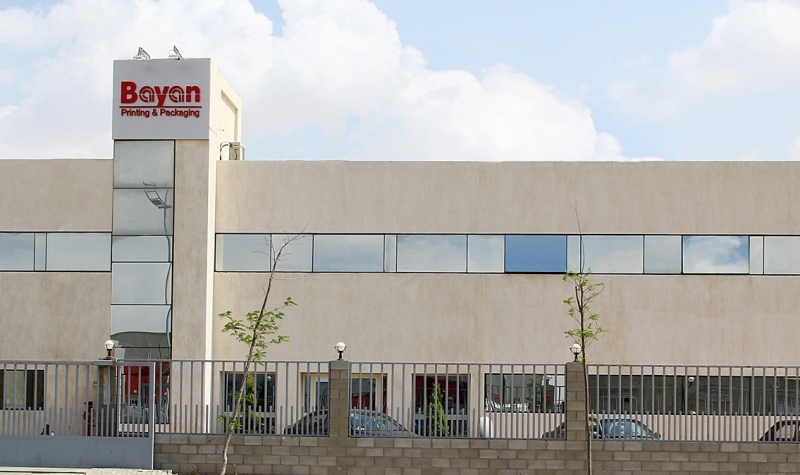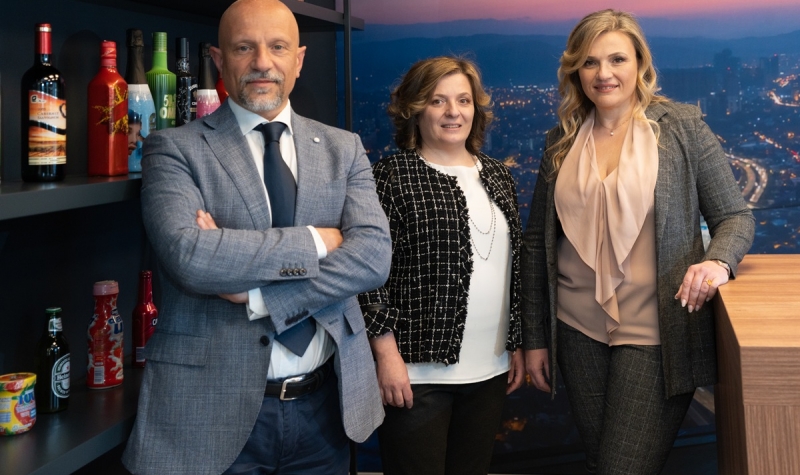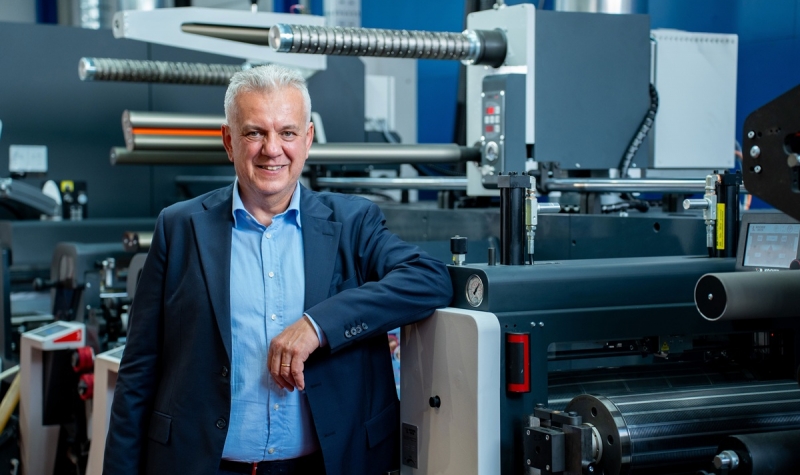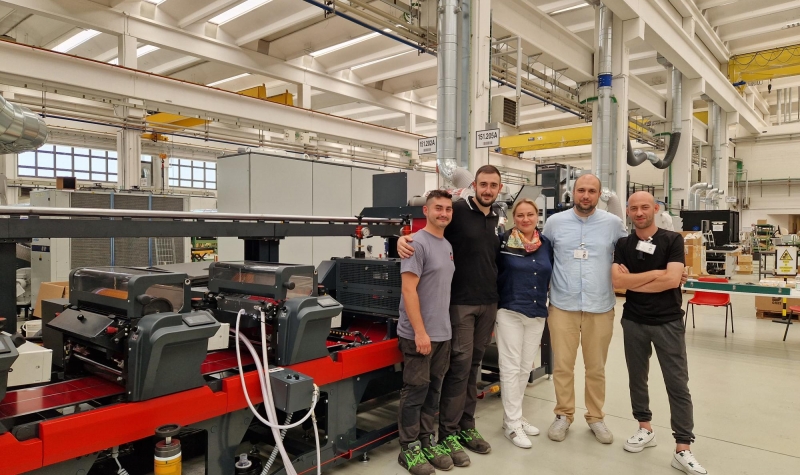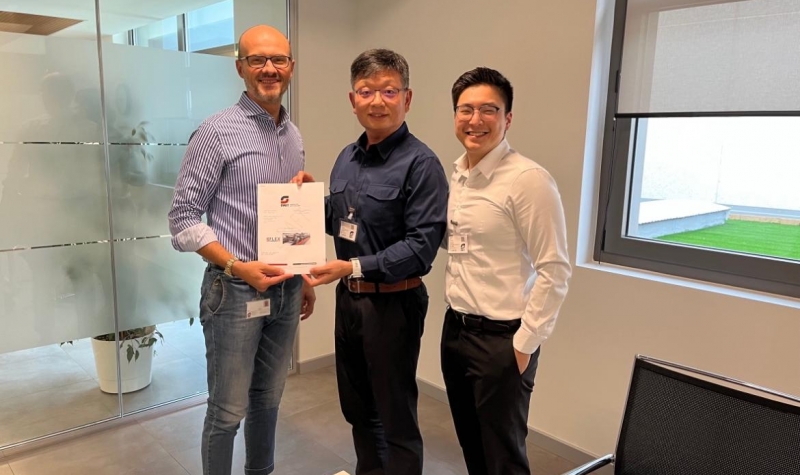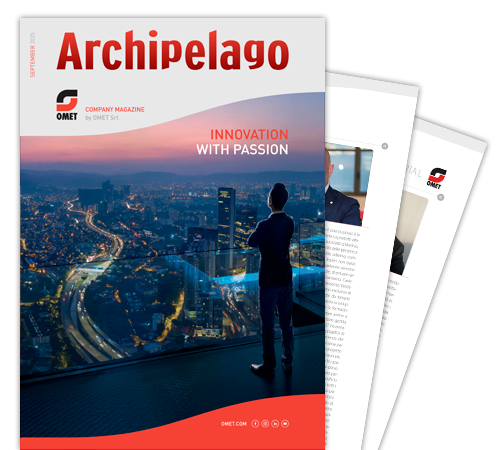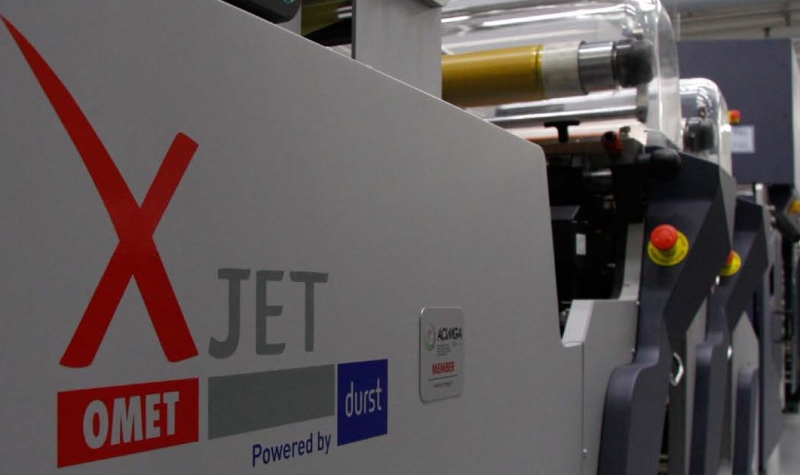
Hyper-technical, high quality and hybrid solutions: that’s the way to grow
Italgrafica Sistemi is the world’s first user of XJet, the innovative platform developed by OMET and Durst with a high performance inkjet core.
Italgrafica is the label printer that you don’t expect. Not for the presses or the kind of customers, but for the spirit of its founder and owner. With Konig Print – the “strongbox” created to acquire companies and strategic participations – Francesco Niorettini it’s not just a printer passionate, but an entrepreneur able to look beyond the known art, encourage innovation, anticipate market changes and guess the right action to perform.
The site of Castelgomberto is the place where took place the first world installation of OMET XJet, the label press created from the combination of the innovative tradition of OMET in the field of label converting, with the skills of Durst in the inkjet field: two Italians companies able to create one of the most innovative press on the market, despite the proven difficulty of Italian companies to work together.
Let’s discover together the origins of this success.
Industrial skills to win new challenges
Italgrafica Sistemi, which last year celebrated its 25th anniversary, has a staff of almost 70 people (40 employees in Vicenza offices, 15 at LG label in Lavis (Trento) and a network of 10 agents, for a total turnover of over 12 million euros.
Like for many companies of this territory, the origins of the business come from the Vicenza industrial district which was focused, until fifteen years ago, on the household appliance supply chain.
“At first we produced labels for packaging, but soon we specialized on high quality and long lasting labels for washing machines and dishwashers, printed in silkscreen or with flexo technology – explains Niorettini – among our customers there were Merloni, Whirplool, Electrolux. Between 2005 and 2006 I started to feel the coming crisis and quickly I decided to differentiate our business opening to the food and healthcare industries”.
The strong skills matured by Italgrafica in the field of industrial labeling turn out to be an advantage in other competitive sectors: we succeeded thanks to unique and different solutions. “Ever from the beginning, talking with the brands of food & beverage, we understood technical problems that our competitors didn’t recognize, and this become our strength – continues Niorettini -. We have a wide know how about the adhesive labels, and we were able to offer technical solutions getting value for money. For a beer brewer who wanted to recover the stems, for example, we developed an auto-removing label during the washing process”.
Thus, between 2006 and 2010, Italgrafica has grown at exponential rates, until the constitution of the parent company Konig Print and at start of a great investment strategy.
“We acquired LG Trento, a specialized label producer in for the wine sector that today is one of our jewels – explains the owner of Italgrafica -. We also develop and commercialize entry-level inkjet technologies, and we are increasing exports by selling directly in Switzerland, France and Germany. But the common denominator of everything we do is an high level of technology”.
A step forward in technology
Beyond the personal vision of Niorettini, from the technical point of view the history of Italgrafica is similar to the most advanced European label producers.
“We’ve always had a particular attention for technology and innovation – explains the founder and holder – in 2007 for example we invested in the RFID technology and today we produce labels with microchips. We developed evolved techniques for multipage labels and invested on the use of variable data. We have always pushed on this market, achieving for example multi-material kits of labels for the household appliances assembly, shaped multi-page labels, sOMETimes combining different materials. We work in collaboration with the designers, who stimulate us to find technical solutions for their needs”.
The last years have seen a rise of investments and installations of new machines, always characterized by particular functions and, where possible, by personalized technology. Hence, the special relationship with OMET, which has an uncommon ability to customize its modular presses in a “sartorial” way.
Digital technology in Italgrafica comes in slight delay, but with a lot of clear ideas. In 2015 the company introduced a Xeikon 3300 with ICE toner, able also to print films: a choice made for having the highest quality and for the desire to not preclude natural papers and materials.
After two years, it was time for one step further. “I’ve always thought that toner and inkjet should be integrated in a hybrid ecosystem made by both digital and conventional technology – explains Niorettini – so, I liked immediately the combination of a highly performing digital like Durst’s, with Samba heads and 8-color engine synchronized with OMET modules: it is the only possible way to make special multipage labels, coupon for competitions and other products for the industry.
The inkjet looks forward at high volumes
When it comes to digital vs. flexo, one of the recurring themes is breakeven, the search for the famous break-even point which makes a technology economic or not compared to a certain volume of production.
This is one of the areas where the new inkjet technologies, with their productivity much higher than the past digital technologies, are shifting the existent paradigms.
This is the direction where Italgrafica chose to orient the new investments, focusing on the XJet. “Our challenge is to make bigger and bigger numbers with digital technology: we have conceived the investment on XJet as the digital key to reach medium/high volumes – says a proud Niorettini -. Already in the first days we have managed high volumes of labels for detergents and oil with hybrid production on polypropylene and polyethylene. While the most part of digital engines is uneconomic for individual jobs over 2-3000 linear meters, with OMET XJet we aim at 10-15,000 meters.
Digital will be revolutionary only when it will have the potential to replace flexo”.
The future is full integration and hyper-technological offer
In the two production sites, where flexo, digital, silkscreen and offset live together, Italgrafica has optimized resources and exploited all synergies, avoiding redundancy. The company has always in stock at least 150 kinds of substrates, that become almost 300 with the supports dedicated to wine. The same goes for metallic foils, both cold and hot, printable also with digital technology. Organization is managed by a MES software, which allows a precise programming and verifies costs and consumption of materials and inks. To obtain a very high print quality and manage color in an advanced way, Italgrafica has been using for eight years Kodak Prinergy software, combined to engraving technology of Kodak NX polymers. “Thanks to NX technology we can get with the flexo a quality almost identical to the offset – explains Niorettini – although the polymers are more expensive, the customer is willing to spend more for a great visual impact of his product”.
Customer relationship and the ability to exceed market expectations is one of the competitive advantages of Italgrafica. “We have customers planning an entire day for the start-up day, and finally leave after 30 minutes with their product approved” he says proudly. But if the perceived quality is apparently taken for granted, it’s always more complex to define if the digital print can be the same”. But even on this point Niorettini has clear ideas: “The digital itself is not a relevant issue. The common belief is that digital is a compromising technology of poor quality, but just showing products like ours leave the customers incredulous”. And the competitors? Digital itself is a challenge, given the increase of commercial and web-to-print operators that overlook to the production of labels. “Change has already begun. The recent crisis has brought many sheet-fed printers to convert their business into packaging and labels printing, enticed by more marginality – concludes Niorettini -. Investing in innovation for us is the best way to raise the bar. To increase the professional and technical level helps us to keep the distance. In short, there will always be an uneconomic product for generalists. And we will be there”.
Interview with Francesco Niorettini, Founder and Owner of Italgrafica Sistemi
 What was the first reason that made you look at digital technology?
What was the first reason that made you look at digital technology?
When we bought the first Xeikon we saw a way to produce small quantities in a more efficient way on different substrates.
Only two years later you arrived at inkjet and hybrid. What is the challenge today?
The challenge is to manage higher volumes with digital technology, above all to recover inefficiencies in changeovers: we have very large orders with a common layout, but with several changes in language, graphics, color palette. We are also working on new kinds of labels with variable data, to be used for competitions and promotions.
How much OMET XJet represent efficiency for existing orders, and how much new business?
It will take some months to say it for sure. The first challenge is to bring OMET XJet to the minimum volume needed to repay, and this seems quite easy. When we will go full speed, however, we foresee 50-55% of conventional works, and the rest filled with innovative works. OMET and Durst are an unprecedented combination, too … I confess, it was not obvious that these two companies could be two half of the same apple. But both of them have unique features. We bought our first OMET line in 2000, while Durst is a new brand, digital native, which has emerged for its reliability since the first version of Tau. OMET had started before a digital project with another inkjet brand but it never convinced us, neither for quality nor for performance. Everything turned different when OMET started the partnership with Durst to make a hybrid line that combines the best of their two worlds. OMET XJet with its 80 meters per minute of quality, is actually comparable to a flexo performance.
Let’s talk about maintenance …
We have completed installation and training, so it’s still all on paper. But if we compare a conventional equipment with one digital, there is no doubt that digital has higher maintenance costs. But it’s also true that this cost is rebalanced by lower costs of prepress, polymers, start-up, waste disposal and chemistry. Of course operators must develop new skills, but we are lucky because we have a young team, dynamic and enthusiastic about this innovation.
What are the unique features of OMET XJet?
Now there are not many hybrid solutions on the market, but the 8 colors engine by Durst, the very high quality and speed of this machine are an absolutely unique combination. Furthermore, thanks to the independent unwinder and rewinder of the Tau group, we can choose whether to use the complete hybrid line or just the inkjet group, saving an enormous amount of time and waste in the preliminary and start-up phases, thanks to the short paper run.
We warmly thank “Italia publishers” magazine for letting us publish this article by Lorenzo Villa (http://www.italiapublishers.com/)
Click here for downloading the Italian version
 is the web magazine with all news about OMET Group
is the web magazine with all news about OMET Group 
